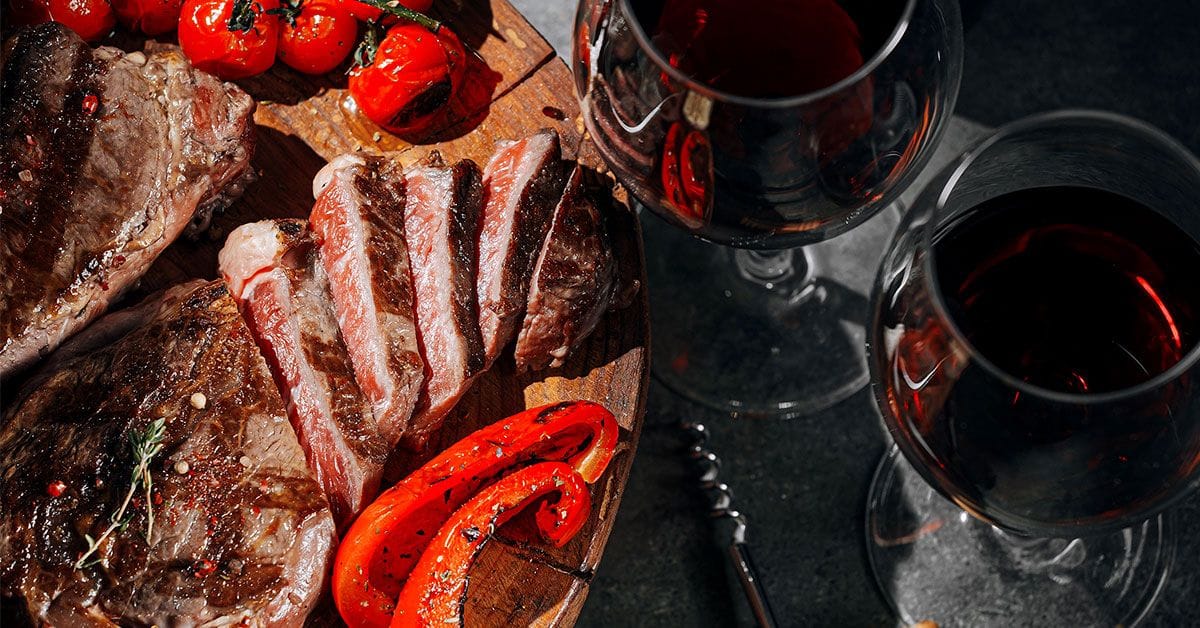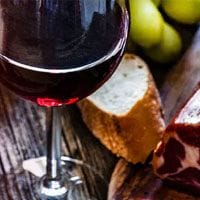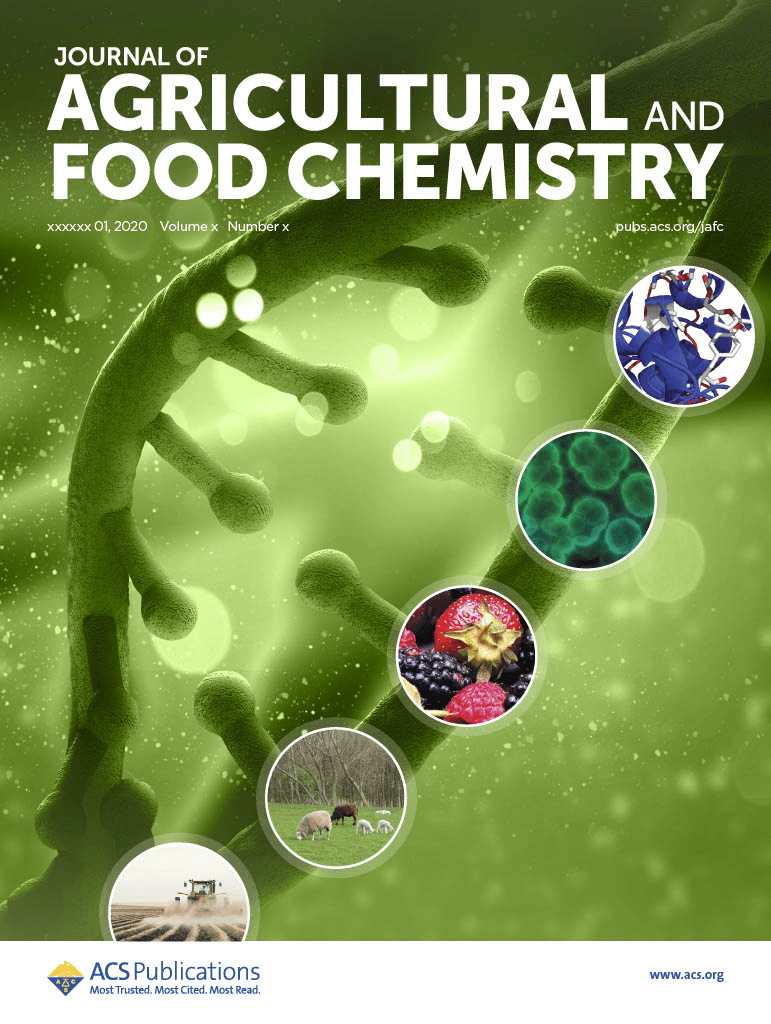Often described as having dominant fruity or floral notes and some roasted and liquorice odors, Bordeaux reds also have "meaty" nuances: burnt, cooked, smoked, among others. Pour a glass and join us as we explore the chemistry of it all.

Previously on Axial, we brought you the science behind the "perfect" food and wine pairings, specifically around the role of lipids and their interaction with tannins. And now, chemists have brought us a new topic for our party small-talk arsenal: the sensory evaluation of thiols in red Bordeaux wine, a drink known for its distinctive aging bouquet. Wine contains both volatile and non-volatile compounds: volatiles such as thiols contribute to aroma, and the non-volatile substances are responsible for taste and mouthfeel. And for Bordeaux reds, the nature of the volatile chemicals at the heart of this characteristic sensory experience has yet to be fully understood.
However, researchers from the University of Bordeaux, France have been hard at work over the past decade to better understand their region's beloved wines—particularly how volatile compounds such as thiols contribute to the aromatic nuances of certain reds and significantly affect our sensory experience.
A 2015 study from a team at the University provides insight into how certain sulfur compounds and polyfunctional thiols influence the complex aroma profile of red Bordeaux wines as they age. By analyzing 24 wines and using professional tasting panels and statistical methods, the research identifies a link between these compounds and the typical "aged wine" aroma. It particularly focuses on how the presence of these compounds relates to key aromatic notes (such as undergrowth, truffle, and smoke) in the wine's aging process.1

Pairing Up for the Party Season: The Chemistry Behind the Perfect Food and Wine Pairings
In 2022, another Bordeaux team's work, published in the Journal of Agricultural and Food Chemistry, demonstrates a novel spectroscopic technique for qualitative screening of odorous volatile thiols in red wines. Previously, there had been progress in measuring specific thiols in tiny amounts, but figuring out exactly which thiols were present hadn't been heavily explored. The researchers used silver ion solid-phase extraction (to extract the thiols) alongside a technique involving multidimensional gas chromatography coupled to mass spectrometry and olfactometry (to separate and identify the thiols). Their findings present a safer and more efficient method for extraction and analysis of red wine compounds, with a focus on discovering unknown thiols to help further our understanding of wine's aroma and flavor profiles.
And now, these same researchers have grown their team to help evaluate the thiols responsible for Bordeaux's "meaty" odors. Further advancing their prior extraction and analysis techniques, the researchers used a combination of silver ion solid-phase extraction with heart-cutting multidimensional gas chromatography mass spectrometry/olfactometry and comprehensive 2D gas chromatography time-of-flight mass spectrometry to identify several furan thiols contributing to these aromas. Notably, they identified 2-methyltetrahydrofuran-3-thiol, a new compound reported in wine for the first time. They also discovered an additive effect between this new compound and the previously known 2-methyl-3-furanthiol.
This confirms earlier research that links certain thiols to these empyreumatic (describing smoky, burnt, dried, or grilled aromas) notes in aged wines.4-5 It also demonstrates the significance of discovering new trace volatiles for aroma research, suggesting further study into other unknown "meaty" odorants to deepen the understanding of Bordeaux's aging bouquet.

Like a Fine (Sparkling) Wine: How to Age Champagne Without Losing the Bubbles
Another elusive aroma in Bordeaux wines involves dried or cooked fruit nuances, which arise from γ-nonalactone, a compound biotransformed from 4-oxononanoic acid by Saccharomyces cerevisiae during alcoholic fermentation.6 The volume of research going on in this field demonstrates that the development of an aromatic bouquet during fine wine aging depends on complex transformations occurring in a reductive atmosphere.2
A further consideration is that one of the core processes of wine-making is changing. Historically, sulfites have been added to wine as a preservative due to its antioxidant, antioxydasic, and antimicrobial properties. But today many people prefer fewer additives and more natural foods. So what we know about aromas could shift, since sulfites play their own role in the volatile composition of wine and its sensory perception.7
As these studies demonstrate, the journey into better understanding Bordeaux wine's intricate aromas reveals a fascinating intersection of chemistry, tradition, and sensory experience—not only enriching our appreciation of this celebrated beverage but also opening new avenues in the science of winemaking.
References
- Picard, M. et al. Involvement of Dimethyl Sulfide and Several Polyfunctional Thiols in the Aromatic Expression of the Aging Bouquet of Red Bordeaux Wines. J. Agric. Food Chem. 2015, 63, 40, 8879–8889.
- Chen, L. and Darriet, P. Qualitative Screening of Volatile Thiols in Wine by Selective Silver Ion Solid-Phase Extraction with Heart-Cutting Multidimensional Gas Chromatography Mass Spectrometry/Olfactometry. J. Agric. Food Chem. 2022, 70, 15, 4701–4711.
- Chen, L. et al. Identification, Quantitation, and Sensory Evaluation of Thiols in Bordeaux Red Wine with Characteristic Aging Bouquet. J. Agric. Food Chem. 2023, 71, 43, 16248–16259.
- Tominaga, T. et al. Role of Certain Volatile Thiols in the Bouquet of Aged Champagne Wines. J. Agric. Food Chem. 2003, 51 (4), 1016–1020.
- Tominaga, T. et al. Contribution of Benzenemethanethiol to Smoky Aroma of Certain Vitis Vinifera L. Wines. J. Agric. Food Chem. 2003, 51 (5), 1373–1376.
- de Ferron, P. et al. Aromatic Potential of Bordeaux Grape Cultivars: Identification and Assays on 4-Oxononanoic Acid, a γ-Nonalactone Precursor. J. Agric. Food Chem. 2020, 68, 47, 13344–13352.
- Pelonnier-Magimel, E. et al. Methyl Salicylate, an Odor-Active Compound in Bordeaux Red Wines Produced without Sulfites Addition. J. Agric. Food Chem. 2022, 70, 39, 12587–12595.
